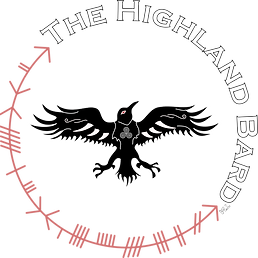From its early days, The Royal Edinburgh Military Tattoo has been an international favorite. Performers from over 46 countries have taken part in the Tattoo, and around 30 per cent of the 220,000 audience each year are from overseas. Each year's Tattoo is very much a 'global gathering' - showcasing the talents of musicians and performers from every corner of the globe. In addition to this, the Tattoo has been televised in more than 30 countries. An annual television audience of 100 million watches the coverage worldwide. The international flavor of the Tattoo has been deliberately developed as a key element in its capacity to entertain a huge, cosmopolitan audience.
The Tattoo's unique ability to bring together thousands of people for this annual celebration of music and entertainment continues and the public's appetite for pomp and ceremony shows no sign of diminishing. By the first half of the 18th century, despite rising prosperity evidenced by its growing importance as a banking center, Edinburgh was being described as one of the most densely populated, overcrowded, and unsanitary towns in Europe. Visitors were struck by the fact that the various social classes shared the same urban space, even inhabiting the same tenement buildings; although here a form of social segregation did prevail, whereby shopkeepers and tradesmen tended to occupy the cheaper-to-rent cellars and garrets, while the more well-to-do professional classes occupied the more expensive middle stories.

The Royal Edinburgh Tattoo
Share
During the Jacobite rising of 1745, Edinburgh was briefly occupied by the Jacobite "Highland Army" before its march into England. After its eventual defeat at Culloden, there followed a period of reprisals and pacification, largely directed at the rebellious clans. In Edinburgh, the Town Council, keen to emulate London by initiating city improvements and expansion to the north of the castle, re-affirmed its belief in the Union and loyalty to the Hanoverian monarch George III by its choice of names for the streets of the New Town, for example, Rose Street and Thistle Street, and for the royal family: George Street, Queen Street, Hanover Street, Frederick Street and Princes Street (in honor of George's two sons).
In the second half of the century, the city was at the heart of the Scottish Enlightenment, when figures such as David Hume, Adam Smith, James Hutton, and Joseph Black were familiar figures in its streets. Edinburgh became a major intellectual center, earning it the nickname "Athens of the North" because of its many neo-classical buildings and reputation for learning, similar to Ancient Athens. In the 18th century novel The Expedition of Humphry Clinker by Tobias Smollett one character describes Edinburgh as a "hotbed of genius".
From the 1770s onwards, the professional and business classes gradually deserted the Old Town in favor of the more elegant "one-family" residences of the New Town, a migration that changed the social character of the city. According to the foremost historian of this development, "Unity of social feeling was one of the most valuable heritages of old Edinburgh, and its disappearance was widely and properly lamented."
Source: edintattoo.co.uk
Image: Tattoo ceremonies
